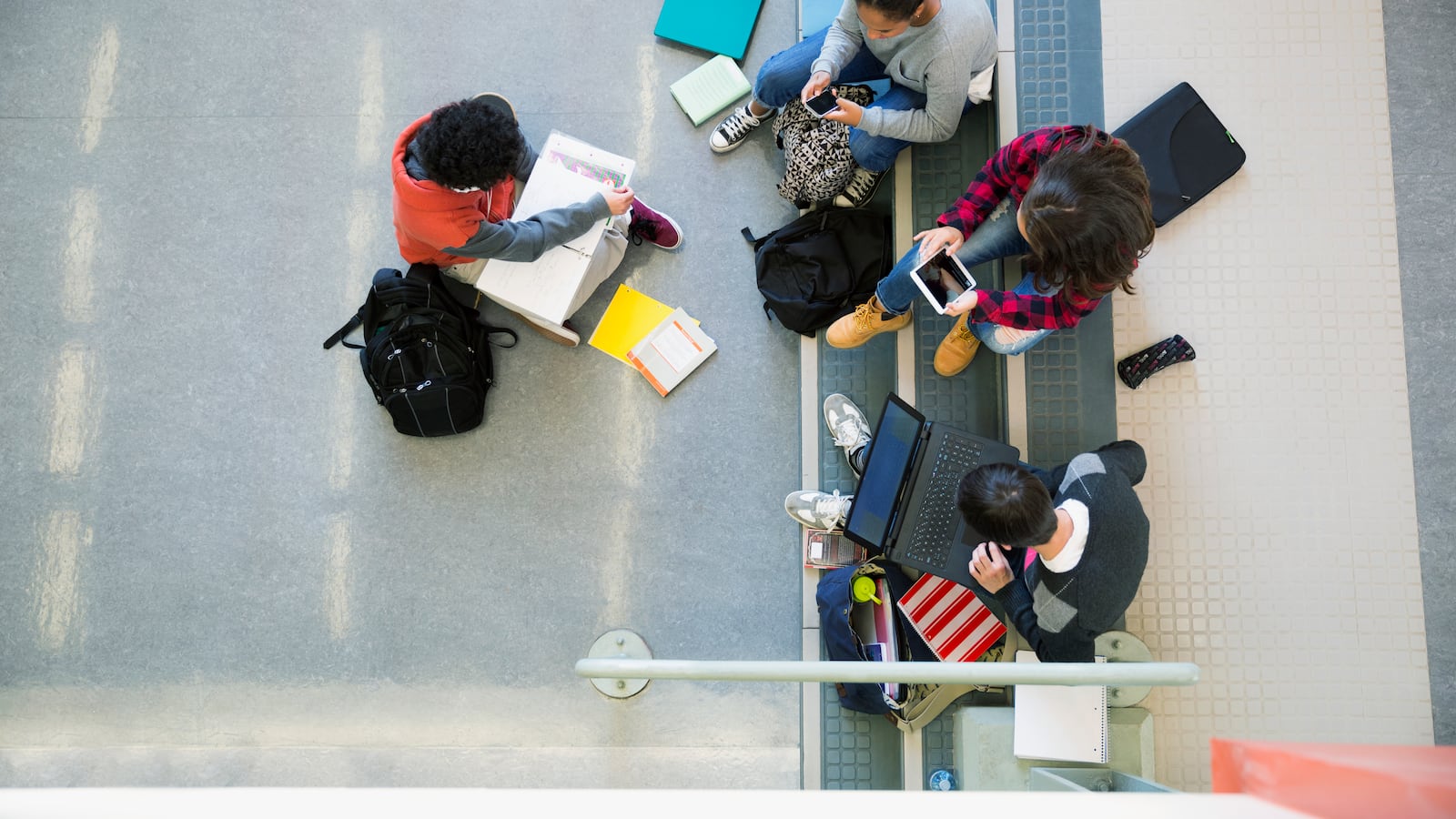Dispelling fears that a universal application system for high schools would drive more students to charters, a new study shows enrollment at neighborhood schools is up slightly.
About 100 more Chicago Public Schools freshmen enrolled at neighborhood high schools during the 2018-19 school year, an increase from 22 to 23 percent over the previous year, according to the study, from the UChicago Consortium on School Research and Federal Reserve Bank of Chicago. The percentage-point jump marks the first such increase since 2014, when 26 percent of district high school students attended neighborhood schools.
Related: New data pulls back curtain on Chicago’s high school admissions derby
With the fall 2017 launch of GoCPS, Chicago Public Schools became the nation’s largest school district to integrate charter schools with district-run schools in its universal application. Since the platform made it easier to apply to charter schools, some Chicagoans worried enrollment at neighborhood schools would slide. But the opposite happened.
“I think maybe what happened is a lot of high schools run small specialized programs, and it’s possible that the GoCPS platform raised awareness of those programs,” said Lauren Sartain, a consortium senior research analyst.
For example, she said, tech-minded students might have assumed that their neighborhood school only has a general education program. But when they logged on to GoCPS, they could see that their local school also has a computer game design program that interests them.
Here are some other highlights from the report:
- Nearly all district 8th graders, 91 percent, applied to high school via GoCPS.
- About four out of five got an offer from one of the schools they ranked in the top three on their application.
- Students who didn’t get an offer at all were more likely to have applied to fewer schools or were non-district students applying to district high schools.
- Most students, 61 percent, enrolled where they were accepted.
- Another 26 percent enrolled at another district or charter school.
The report also found that black students and students living in lower-income neighborhoods on average applied to more schools than their peers — but they were less likely to rank a highly rated school among their top choices.
“We think students and families are making the best decisions they can about school enrollment given the constraints they face,” Sartain said. “Maybe it’s about transportation, or not having schools near them they feel comfortable with.”
She also noted that there might be non-academic reasons why families choose to enroll at lower-performing schools, such as parent programming and wrap-around services.
Related: In final stretch of recruitment season, Chicago high schools race to impress
Another big finding from the report centers on the impact of what Sartain called “application screens.”
Some applicants had to go through post-application requirements to get an offer, like auditioning for arts programs or attending mandatory information sessions for International Baccalaureate. More than half of students applied to schools and programs that asked for additional requirements, but fewer than half of the students who applied to those programs fulfilled the requirements, rendering most ineligible.
Sartain said students of color and students who live in high-poverty neighborhoods are the least likely to complete the screens, especially for IB programs, raising questions about what the district can do to make things easier for them.
The answer, she said, could involve holding online information sessions, having elementary school counselors set aside time during advisory sessions to help increase access for students having trouble completing screens, or another solution.
“What we see from parents is that they weren’t expecting there to be all these additional barriers,” said Nate Pietrini, a former district principal and executive director of High Jump Chicago, a non-profit organization that helps families navigate the high school selection process.
It still takes a lot of research and patience to navigate that extra layer of applying to a school, and Pietrini said that families with time and resources often find the puzzle easier to crack than families from marginalized communities and under resourced schools. With that basic inequity in mind, he posed a question to the district — and new Mayor Lori Lightfoot
“We know that GoCPS has improved access for a lot of families, but my question would be when can we see a more nuanced look with an equity lens into that choice application?” he said.
In a statement, Chicago Public Schools said it is encouraged by the findings, which also highlight the ways that the admissions process can be strengthened and made more equitable. “This research has provided an unprecedented look into families’ choices and trends and we are eager to learn more about families’ preferences, accessibility and equity as we continue this process,” it reads.
Related: What happens when students don’t get their first-choice Chicago high school?
Sartain said that her research team will continue to study high school admissions and the impact of GoCPS. Specifically, they are looking to understand what students and families value when weighing their high school options, and whether the platform results in better academic outcomes, fewer transfers, and a more positive experience overall.

